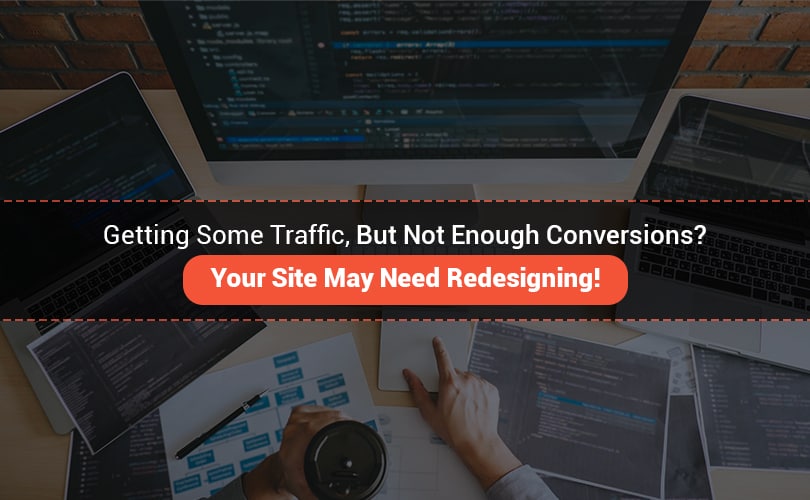


The momentum for taking business online hasn’t slowed down any. If anything, it only continues to increase. According to Statista, almost 4.57 billion people – accounting for nearly 60% of the world’s population – are active internet users as of April 2020. China, India, and the U.S. are the top nations in terms of internet usage, but penetration continues to grow across the globe. Savvy business leaders understand that having an online presence is no longer just an option; it’s really become a necessity. And while there are many advantageous tools and platforms you can use to engage the masses, one pillar for building a successful digital marketing and branding strategy is having your own well-designed website.
Whether your business operates on an e-commerce platform or not, you need your own business website. Why? Because the majority of the world’s population is already online, and the internet is where most folks go when they’re looking for a product or service they need. If they can’t find your business online, then chances are very good that they’ll take their business to one of your competitors that they can find!
So, how’s your website doing? If you were a browser who knew nothing about your business and happened to land on your business site, would you find everything you needed to be able to make a well-informed purchasing decision? Is your website helpful? Accurate? Visually interesting? Engaging? Simple to navigate? Does it provide effective calls-to-action on every page? And beyond these considerations, what should you be looking at to measure how your website is actually performing for your business?
One benchmark that people like to mark is different measures of website traffic. There are different ways to assess this, including the number of clicks you get on each page, how much time your browsers are spending on each page, which external links are bringing you the most page visitors, etc. While each of these measurements is certainly worth noting, a metric that’s much more telling in terms of assessing the performance of your site is that of conversions. The ultimate goal is really about having a website that helps generate real business for you, equating to more customers, clients, and actual sales. If you’re getting clicks without conversions, then something simply isn’t working with your site!
If you’re just not getting much traffic on your website, then that could indicate there are some higher-level opportunities around your overall marketing strategy. If that’s the case, then the branding & marketing pros at Cibirix can certainly help you with some effective strategies to draw more traffic your way. But if your greater issue is more about the lack of conversions, then here are ten signs that it’s time to consider revamping your website design:
The fact of the matter is that you only have about 3 seconds to make your initial impression. If visitors don’t like what they see in the first 3 seconds, they’re likely to click off your site and look elsewhere.
Is your website visually engaging? Is it too text-heavy? Today’s web browser appreciates the inclusion of more visuals, including photos and videos. Interactive tools and functions that are built into a website also create more engagement for users. If your website is missing these features, then it’s missing some real opportunity.
Graphics, layout, and interactives aren’t the only important first impressions; so is the content of your site itself. There’s an old adage in marketing that’s still true today – content is king! Having high-quality content that’s accurate, helpful, engaging, and easy to follow helps to keep browsers on your site, and also encourages them to return! Oh, and if you don’t have a blog page…you need one!
Bounce rate is the percentage of browsers who click off your site after only viewing one page. Average bounce rates for business websites vary somewhat by industry and category, but here’s a good rule of thumb. If the bounce rate for your site is anywhere above 50%, you definitely have some cause for concern. The lower your bounce rate, the better your opportunity to turn browsers into customers!
Another statistic that you should consider is the amount of time browsers are spending on your website. If visitors don’t stay on your site very long, then that means they’re not finding what they’re looking for. You could very well have what they’re looking for, but perhaps they can’t find it because your website is somehow too complicated or confusing.
One possible explanation for high bounce rate or low time-on-site is that your site is just not easy to navigate. There could be a lot of factors in play here. Your website menu may not be particularly efficient or effective. Adding some search bars to individual pages could help, too. Or maybe your website wasn’t professionally designed in the first place.
If your website is slow to load, or only loads properly on certain browsers and devices, then you’re probably losing a lot of potential customers. Remember the 3-second first impression rule? If your page doesn’t come up during the first 3 seconds, then your browsers are probably leaving before the page ever finishes loading!
This is a point that’s not to be missed. Over half of all people who access the internet today are currently doing so on MOBILE DEVICES like smartphones. If your website isn’t built with a design that embraces the mobile browsing experience, then you’re probably losing a TON of potential customers.
A smart website design should be intentional to incorporate the browsing path you want your visitors to take. A conversion funnel is based around the stages a page visitor navigates through your site before they convert. Beginning with your home page, you should know how visitors will typically move around your site to find what they’re looking for.
If you don’t even know what a call-to-action (or CTA) is, then it’s time to learn. A CTA is an area of your webpage that calls people to action, like “Sign Up Now,” “Get Started Today,” or “Click Here for More Information.” Many times these CTAs take the form of a button for browsers to click, which will then redirect the user to a direct purchasing page, or to a form for gathering more information. Simply put, CTAs are what help turn browsers into customers and clients. If your website doesn’t include enough clear CTAs, then that could certainly account for your low conversion rate!
If many of the above points apply to your website, then it’s time for you to upgrade your website. A complete overhaul may not be required, but there are definitely some things that need to happen to optimize your website for better performance. What would a redesign for better conversion look like? In most cases, such a website revamp would include the following:
Ready to start saving time and effort, create more leads, engage more customers, boost your conversions, and enable your business to really start GROWING? Helping businesses to Rise Digitally is what we’re all about at Cibirix! We specialize not only in web design services, but also in digital marketing & branding strategies for businesses and organizations. If you’re ready to get started, go ahead and reach out today! And if you’d rather start out by speaking with a real human, just give us a call at !

Since founding Cibirix, Ashish has leveraged his marketing degree to lead the agency in crafting meaningful digital marketing experiences for clients. His results-driven approach is a unique mix of analytical thinking, crisp visual aesthetics and a desire to simplify frontends while developing robust architecture. With a passion for design, technology, & marketing, He leads each aspect of the agency’s business and oversees its talented team of digital professionals.